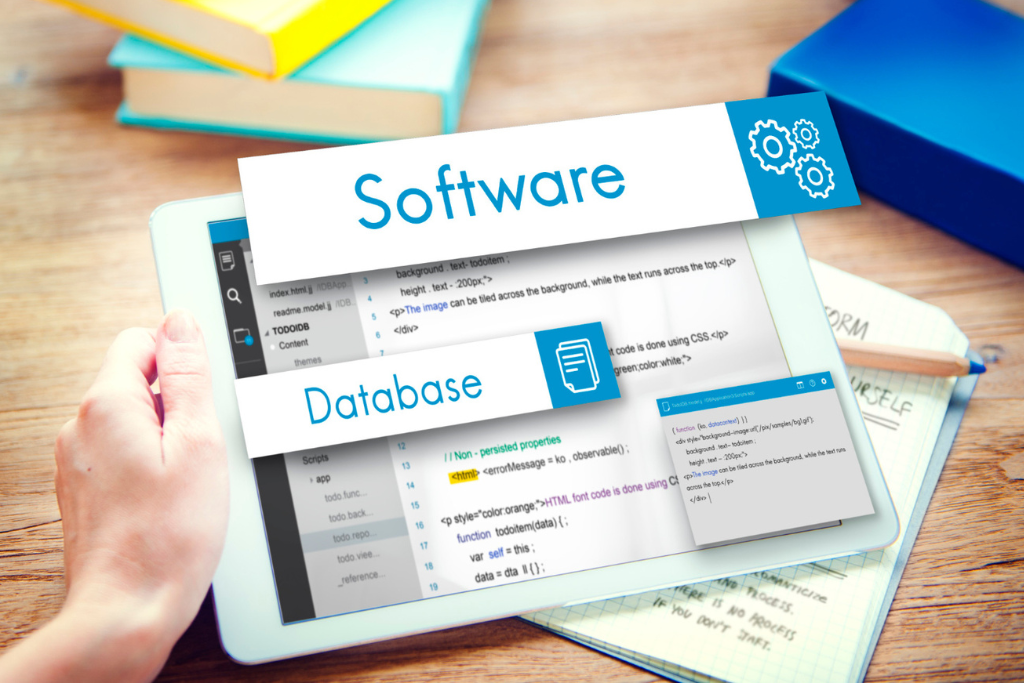> Articles > Software Maintenance Benefits and Tips for Enterprises

Software Maintenance Benefits and Tips for Enterprises
These days, enterprises rely strongly on software solutions that help streamline operations, boost customer experiences, and drive exponential growth. However, developing and deploying the software is not enough. The appropriate maintenance and support are important to ensure the systems function optimally. The following software maintenance benefits and tips can help enterprises stay efficient and competitive.
What is Software Maintenance?
Software maintenance and support are crucial phases in the software development lifecycle, occurring after the software is released into production. This phase generally comprises bug fixes, enhancements, adapting to necessary changes, and troubleshooting. Maintenance is a proactive job, including the implementation of preventative measures to avoid potential issues, as well as reactive, such as when adapting to the changes or fixing issues that have already taken place.

Software Maintenance Benefits
Bug Fixing
Bug fixing is a major priority across software maintenance services to ensure the software runs without glitches. This process entails searching for coding errors and rectifying them. Issues typically occur in the hardware, operating systems, or other parts of the software, and are fixed without impacting the functionality of the software.
Capability Enhancement
Software development outsourcing offers more flexibility and scalability for businesses that need developers but don’t want to hire from hiring them in-house. Boost your business with a technically updated solution by enrolling in software maintenance services. To achieve this, businesses should partner with a reputable firm that specializes in custom software development and maintenance.
Facilitating Integration with New Technologies
Technology is constantly evolving, therefore enterprises need to stay updated. Software maintenance ensures that enterprise systems remain compatible with growing technologies, allowing seamless integration with the adoption of new platforms or tools.
Without the necessary updates, the software can become outdated, making integration impossible. Maintaining compatibility can help enterprises use the latest technologies to boost their operations without any disruptions.
Improved Performance & New Features
Many maintenance programs include component upgrades, which entitle you to free updates. Such upgrades address the core issues reported by other users that can help enhance performance and functionality. Also, it is important to consider the necessary cost of upgrades to make the program effective. Typically, it relies on the vendors as the upgrades reflect the changes required by the customers and the latest features that get added following the release. This means that you get a system that relies on the latest technology, software and features.
Adapting to Changing Business Needs
While the companies are constantly growing, the need for software changes accordingly. Software maintenance helps ensure that the system stays flexible and highly adaptable. It enables businesses to implement the latest features or modify the existing ones on the basis of changing requirements. With the help of the dedicated support team, it is often easier to request distinctive customizations or updates that can boost functionality. The adaptability can help businesses keep their competitive edge and be responsive to market demands to ensure that the software aligns with the evolving goals.
Enhanced Security
There is a growing concern related to cybersecurity threats, and enterprise software is the main target for cyberattacks. Software security risks expose key business and customer data. Routine maintenance enables the identification and fixing of security flaws before they get exposed.
Software support teams are up to date with key security threats and trends, applying the required patches and updates to protect the enterprise systems. This continuous process is important to protect businesses from data breaches and helps maintain the reliability of the customers and partners.

Facilitating Integration with New Technologies
Advances in technology evolve daily, and businesses must keep pace, to stay ahead of their competitors. Software maintenance ensures that enterprise systems stay compatible with emerging technologies so they can be integrated smoothly when new tools or platforms have to be adopted.
If the software is refreshed, it becomes updated and, hence, compatible with most modern systems. An enterprise that maintains compatibility can use new technologies to improve its operations while incurring minimal disruptions or system replacement processes.
Extending Software Lifespan
Since software solutions involve a serious investment for an enterprise, it is of prime importance to maximize the lifespan of the systems. Regular maintenance allows businesses to continue using their software without constantly replacing or upscaling.
Enterprise software’s extended life is attributed to the resolution of minor bugs, new feature additions, and adherence to current and emerging technologies. Support and maintenance help scale systems based on business needs without necessarily substituting entire platforms.
Conclusion
Software maintenance and support is extremely important for the successful operation of the enterprise. When businesses focus on proactive maintenance and support, they can extend the software’s lifespan, reduce downtime, and stay competitive across the growing technological space. Investing in the right software maintenance and support services will help ensure continuous efficiency, greater adaptability and security for the enterprise systems.
Frequently Asked Questions
1. How often should enterprise software undergo maintenance?
The need for maintenance is based on the software’s complexity and industry requirements. Most enterprise systems benefit from scheduled updates, at least quarterly, for optimal performance and security.
2. What is the difference between software maintenance and support?
Software maintenance involves updating, optimization, and correction of bugs. Support includes correcting problems as they arise and giving expert advice when necessary. Both are recommended for smooth, unrestrained system operation.
3. Can software maintenance be done without disrupting business operations?
Maintenance can be scheduled during off-hours or done in phases, therefore it will not interfere with day-to-day operations. Flexibility in setting up maintenance schedules helps most support teams minimize downtime.
Contact SlickDigital for exceptional software maintenance and support to ensure that your systems perform at their best.
Latest Posts
-
 10 Jun 2025 Company NewsPress Release: SlickDigital Joins Pivotly to Advance Custom App Development for AI-Driven Enterprises
10 Jun 2025 Company NewsPress Release: SlickDigital Joins Pivotly to Advance Custom App Development for AI-Driven Enterprises -
 21 Nov 2024 Data MigrationKey Data Migration Challenges and Effective Strategies to Overcome Them
21 Nov 2024 Data MigrationKey Data Migration Challenges and Effective Strategies to Overcome Them -
 21 Nov 2024 Blockchain DevelopmentHow to Choose the Right Blockchain Platform for Your Development Project?
21 Nov 2024 Blockchain DevelopmentHow to Choose the Right Blockchain Platform for Your Development Project? -
 21 Nov 2024 MVP DevelopmentHow to Validate Your Business Idea with MVP Development
21 Nov 2024 MVP DevelopmentHow to Validate Your Business Idea with MVP Development -
 19 Nov 2024 Staff AugmentationTop Benefits of IT Staff Augmentation for Growing Tech Teams
19 Nov 2024 Staff AugmentationTop Benefits of IT Staff Augmentation for Growing Tech Teams -
 19 Nov 2024 CloudHow Cloud Applications Affect the Future of Your Business
19 Nov 2024 CloudHow Cloud Applications Affect the Future of Your Business -
 18 Nov 2024 Application DevelopmentExplore the Best Tools for Effective Application Integration
18 Nov 2024 Application DevelopmentExplore the Best Tools for Effective Application Integration
